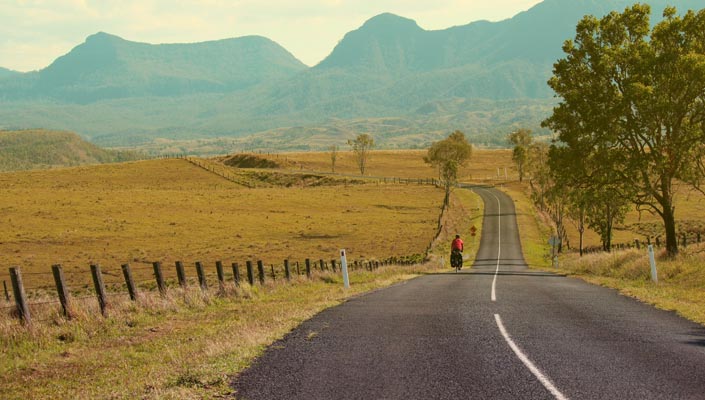
The long days of summer are upon us in the Northern hemisphere - a beautiful time for riding in most cases. No need to wear base layers, no booties or overshoes and no need for riding lights. However, there can be a price to pay for this warm, blissful existence: riding in the heat can be hard work, and in some cases genuinely dangerous.
Body weight losses from sweat in the 3 to 4 percent range impair the body's ability to efficiently utilize oxygen. When dehydration causes more than 4 to 5 percent weight loss, your power will deteriorate tremendously. Most of us know that a 5% weight loss is not at all uncommon on a long training ride or race, but clearly when this happens we're not operating to our full potential. Here are some ways to minimize the damage, and to make riding in the heat a beneficial, if not entirely pleasurable experience.
Drink Before You Ride
Begin drinking well before you get on the bike: as a minimum, consume 1 bottle/bidon (12 ounces or 375ml) before you leave home, then once you're riding try to drink at least that much every 20 minutes. It's important to remember to sip your fluids, not gulp them down, to avoid stomach discomfort.
If you cannot carry enough fluids in your bottles/bidons, wear a back or hip-mounted hydration system to ensure you drink enough. Such systems also keep fluids colder, and cool drinks tend to taste better, so you tend to drink more.
Plan Ahead
To prevent your drink from quickly becoming warm and unpalatable, freeze one bottle at half full and another at the three-quarter mark before topping them off. (Mountain bikers: Put ice cubes into your hydration pack.) For longer rides, figure out in advance where you can restock with cold beverages by planning to ride past service stations or convenience stores.
Sometimes Water is Not Enough
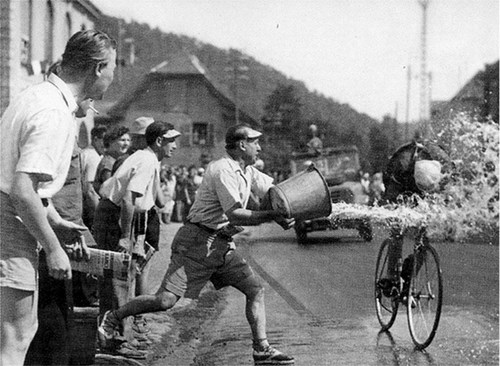
If you know you have a big ride coming up in hot conditions, increase your consumption of watery fruits and vegetables (such as watermelon and grapes) in the days prior. Sodium helps your body hold on to the fluid you're drinking, so sip an electrolyte beverage during your ride. Postride, try a drink that contains some protein - protein pulls water along with it when it travels to your muscles, so it enables you to rehydrate faster. If you only have water, have a snack along with it that contains some protein.
Protect Yourself
We all know getting sunburnt is bad for us and our skin, but it also contributes to fatigue and speeds up your metabolism - the metabolism boost sounds like a bonus, but a faster metabolism means you need even more fluids, which will pose a problem on a hot day when you're already struggling to stay hydrated. So, choose clothing with built-in sun protection (especially arm skins), and wear a cap or bandana under your helmet to prevent your head getting burnt. Try to avoid oil-based sunscreens, as these restrict your ability to sweat and can result in rapid overheating.
Take It Easy and Be Flexible
If you're in for a hot spell that may only last a few days, switch your training sessions around where possible so that your easier recovery rides fall on the days of most extreme heat. If you must do a hard session or race on a really hot day, don't try to maintain the same pace or power you'd put out on a milder day. A great formula to keep you safe is to combine the temperate in degrees Fahrenheit plus the relative humidity - once this number reaches 130, dial your power back by between 7.5 and 10%. For example, if it's 95 degrees Fahrenheit and 35% humidity and you were planning to do a workout of 3 X 20 minutes at 220 Watts, you would dial it back to 3 X 20 minutes at 200 Watts. If you don't use a power meter, use your common sense instead and just take it easy.
Acclimatize
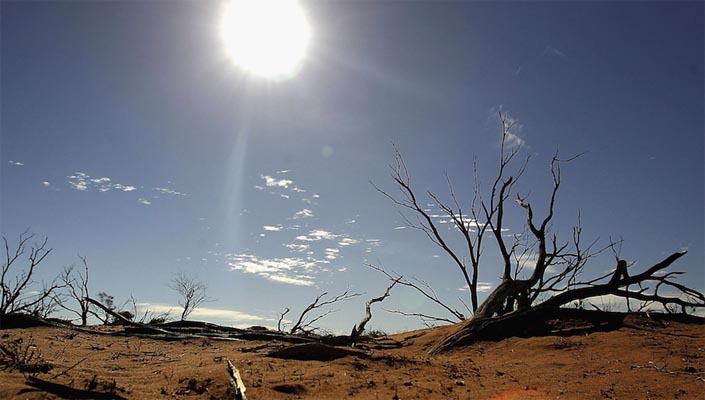
Heat acclimatization is the adaptive process by which we become physiologically more tolerant to high heat conditions. It allows you to ride longer and faster in hot weather, but not as long or as fast as you would in cooler temperatures. Heat acclimatization also decreases, but does not eliminate, your risk of heat illness (e.g. heat cramps, heat exhaustion and heat stroke). The process works surprisingly quickly - most of the gains occur in 4-9 days of training. Full acclimatization occurs in about 14 days. So, plan accordingly if you will be competing in hot weather (e.g. start acclimatization about 2.5 weeks prior to a key event or race). If you're unable to travel that early, the next best thing is to spend some time in a sauna or steam room.
Water, Not Ice
As tempting as it is, and as good as it feels, avoid putting ice cubes on your bare skin. Ice constricts your blood vessels, which in turn means it's difficult for your body to cool itself as it pumps all that overheated blood back toward your body's core. Instead, dump cool water over your head and on your chest and back - it feels just as good, but doesn't have the same effect on your blood vessels.
Your comfort and success on the bike during hot weather ultimately come down to two things: be prepared and take it easy when you know you should. Plan ahead, check your ego, and enjoy some wonderful summer riding!
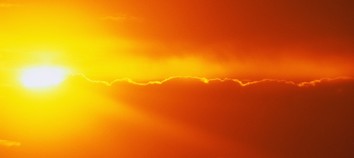
RELATED ARTICLE:
Survive the summer heat with these 7 must haves
Summer is on its way in the northern hemisphere and if there is one thing I know it's got to be survival on a stinking hot day. We have plenty of them where I come from! READ MORE
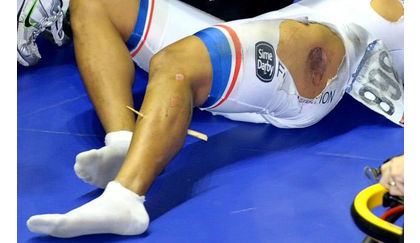
RELATED ARTICLE:
Are cyclists the world's toughest athletes?
Professional road cyclists are the toughest athletes in the world. Bold claim? Maybe, but in the aftermath of some truly spectacular crashes at this year's Tour de France, perhaps it is time to put together... READ MORE


